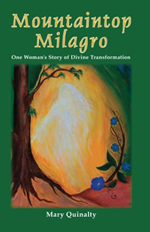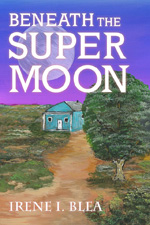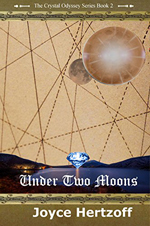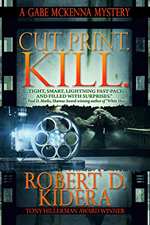Former journalist Mary Quinalty is an advocate for the immigrant and homeless population in Albuquerque, New Mexico where she volunteers for Catholic Worker House. She spent three years writing her memoir, Mountaintop Milagro (2017), which brings to light a life-changing mountaintop experience she believes can happen to anyone. Visit Mary on her website MaryQuinalty.com and on Facebook.
 Why did you write Mountaintop Milagro, and who did you write it for?
Why did you write Mountaintop Milagro, and who did you write it for?
I received first-hand knowledge of the power of God when I saw the brilliant light of a vision on a mountaintop in Mexico. It changed my life forever. On the University of New Mexico (UNM) campus, students who had heard about my encounter asked me for an interview. Eagerly, I sat in front of Aquinas Newman Center after mass and answered questions. When I finished, I was astonished to see many students crowded around, taking notes. Week after week, the interviewing continued. It was humbling to shake their hands and look into their young faces, full of desire to know how I could say, “I know God is real.” It was then I realized how many souls could be inspired by my transformative life if I wrote a book. After living a new spiritual life under God’s guiding hand over 25 years, I was inspired to tell every human being, every soul, “It can happen to you.” That gave birth to my book Mountaintop Milagro in 2016.
When readers turn the last page in the book, what do you hope they’ll take away from it?
It is my hope that when readers finish the book, they’ll know God has a plan for each one of them. Our challenge is to ask God to show us what that is and then do it.
What was the most challenging aspect of completing this work, and what was the easiest?
The most challenging aspect was re-living the truths I learned of how one attains a close spiritual relationship with God. I faced the pain of realizing what a sinful life I was living. That was the most difficult—and then how to put it all down in words. The rewrites were bitter. I was tormented at the time it happened, and I was tormented re-living it. I leaned on my faith and found it was the support of the religious around me that encouraged me to keep writing. Priests, theologians, teachers, and even my soul mate, knew meanings of the Holy Scriptures that I had missed long ago. The easiest part was working with an editor who patiently helped me find the words that laid it all out. I was a first-time book writer, and I had to learn the basics of how to keep my audience reading. That was a pleasant, enlightening learning experience. It raised the bar on my self-confidence.
When did you know you wanted to write your memoir?
In living my spiritual life, I accepted a divine calling to move to Mexico to a village where extreme poverty prevailed. My goal was to establish a mission site in this underserved third-world country where Spanish was the first language. Me? I couldn’t speak Spanish fluently. The Holy Spirit covered my ineptness as I lived alone and worked among the poor, sick, and suffering. Messenger after messenger appeared suddenly with insights that kept me safe from hostilities and helped me develop an understanding of the people I was there to serve. As we resolved each community problem, I became part of the culture and fell in love with the people, the young ones, the elderly frail.
I kept journals week after week during the ten years I lived there. When I returned home, I brought with me boxes of journals and the photos I’d taken to document life in the village. It all captured the quality of life that had been raised by the efforts of my organization and that of the people of the village themselves. God had richly blessed us all. I knew then I had to tell the story. My book covers the life changes of the two heroes of the book, of my changes and how they all blended to accomplish the mission I envisioned. And it certainly humbled me to know, with God’s help, we had reached our goal of developing a village that could be self-sustaining. All the more reason to write the book.
Is there a scene in your book you’d love to see in a movie?
That has to be the scene where I saw the vision. The wonderment of that scene, my inability to understand what it was. And how I didn’t want to be moved from the scene, my refusal to leave. I was on sacred ground but didn’t realize it. The power of God was like a giant wave sweeping my mind, pulling at me. I wanted to go with it. Later in my religious education, I related my experience to the Holy Scriptures where disciples of Christ threw down their nets and followed Christ. That was exactly my feeling. It’s been over 27 years since my vision, and the tears and feelings I had then are as fresh as the day it happened.
What is the best compliment you’ve received as an author?
The best compliment was in a review from Father Rich Litzau, the priest at UNM Newman Center who helped me accurately write the priestly comments and phrases. In his review he says Mountaintop Milagro is “a powerful tale of how God works through individuals over whatever years it takes to accomplish the task. A deeply personal account, written in language that we all can identify with of God being in one’s life in real, quantifiable ways. Mary draws the reader into her experience as one would a fellow traveler on a spiritual journey.”
You’re in the process of writing a sequel to Mountaintop Milagro. What challenges are you encountering with this second book?
Self-publishing Mountaintop Milagro lowered my cash reserves. With that book I learned what a challenge it is to get rejection after rejection from publishing houses and agents who no longer take “first-time” writers. I’m writing the second book, knowing I can’t self-publish it due to low cash flow. I must find a publisher if I’m to see this book in print. I’m hopeful I’ll be successful because the sequel tells the rest of the story. Again, I come back to my faith—if God wants this second book published, he will provide the means.
Do you have advice for other writers?
If self-publishing, don’t enter the marketing field without extensive study of all the avenues of marketing and distribution. Knowledge of social media, including Facebook, Twitter, websites and blogging is essential. In marketing, writers wear a new hat. Be aware that it demands a seemingly endless journey of exposure to the public with dynamics of sales and showmanship, as well as other time commitments. It all taxes one physically and mentally. It can be done, and I’m doing it, but I never imagined how much time and energy it would take.
 KL Wagoner (writing as Cate Macabe) is the author of This New Mountain: a memoir of AJ Jackson, private investigator, repossessor, and grandmother. She has a new speculative fiction blog at klwagoner.com and writes about memoir at ThisNewMountain.com.
KL Wagoner (writing as Cate Macabe) is the author of This New Mountain: a memoir of AJ Jackson, private investigator, repossessor, and grandmother. She has a new speculative fiction blog at klwagoner.com and writes about memoir at ThisNewMountain.com.





















 You’ve written three novels in the Harrie McKinsey mystery series. Did Harrie still surprise you as you wrote her story for Murder on Frequency?
You’ve written three novels in the Harrie McKinsey mystery series. Did Harrie still surprise you as you wrote her story for Murder on Frequency?